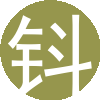[解析]
(1)推理判断题。根据文章第一段The ability to connect an event with its consequences﹣experts use the term associative learning﹣is a crucial skill for adapting to the environment.(将一个事件与其后果联系起来的能力——专家们使用 "联想学习" 这个术语——是适应环境的一项关键技能)。可知,联想学习是将一个事件与其结果联系起来的能力。A 选项"婴儿抓住放在他手里的物体",只是简单的动作反应,没有涉及事件和结果的联系;C选项"司机收到罚单后还继续加速",这不符合常理,也不是将事件和合理结果联系起来;D选项"厨师不顾顾客的抱怨仍然按照他的食谱做菜",没有体现出事件和结果的关联。而B选项"一个学生在取得好成绩后更努力学习",将"取得好成绩"这个事件和"更努力学习"联系起来了,符合联想学习的概念。故选B。
(2)细节理解题。根据文章第二段Participants were required to identify patterns between visual pictures and corresponding rewards through computer﹣based tasks.(参与者被要求通过基于计算机的任务,识别视觉图片与相应奖励之间的模式。) 可知,参与者被要求通过基于计算机的任务,识别视觉图片和相应奖励之间的模式,也就是将图片和奖励配对。故选D。
(3)细节理解题。根据文章第三段The research team was amazed by the results:""We'd initially assumed that associative learning improves continuously with increasing age,"says Dr.Carolin Konrad.However,there was a clear peak in performance at primary school:"Children at this age achieved the best results,learned most consistently and showed the least variability in their learning behavior." Although adults and teenagers learned faster than babies,they didn't reach the performance level of primary school children.(研究团队对结果感到惊讶:"我们最初认为联想学习能力会随着年龄的增长而不断提高," 卡罗琳・康拉德博士说。然而,在小学阶段表现有明显的峰值:"这个年龄段的孩子取得了最好的成绩,学习最稳定,学习行为的变化最小。" 尽管成年人和青少年比婴儿学得快,但他们没有达到小学生的表现水平)。可知,让研究人员惊讶的是小学生在联想学习方面的表现超过了其他年龄段的人。故选B。
(4)细节理解题。根据文章第四段It also emerged that repeated exposure to the learned material plays a crucial role for babies and teenagers since an additional learning session led to an improvement in learning performance in these age groups.Teenagers improved 40% after additional practice sessions,whereas adults showed minimal progress.This finding highlights the"sensitive period"phenomenon﹣the brain's higher plasticity during childhood that allows more efficient knowledge strength.
(研究还发现,反复接触所学材料对婴儿和青少年起着至关重要的作用,因为额外的学习过程会导致这些年龄组的学习成绩提高。青少年在额外的练习课程后提高了40%,而成年人的进步最小。这一发现突出了"敏感期" 现象——童年时期大脑更高的可塑性,使得知识强化更有效。)可知,提到"敏感期"现象是为了强调童年时期学习的重要性,因为童年时期大脑可塑性高,学习更有效。故选C。
